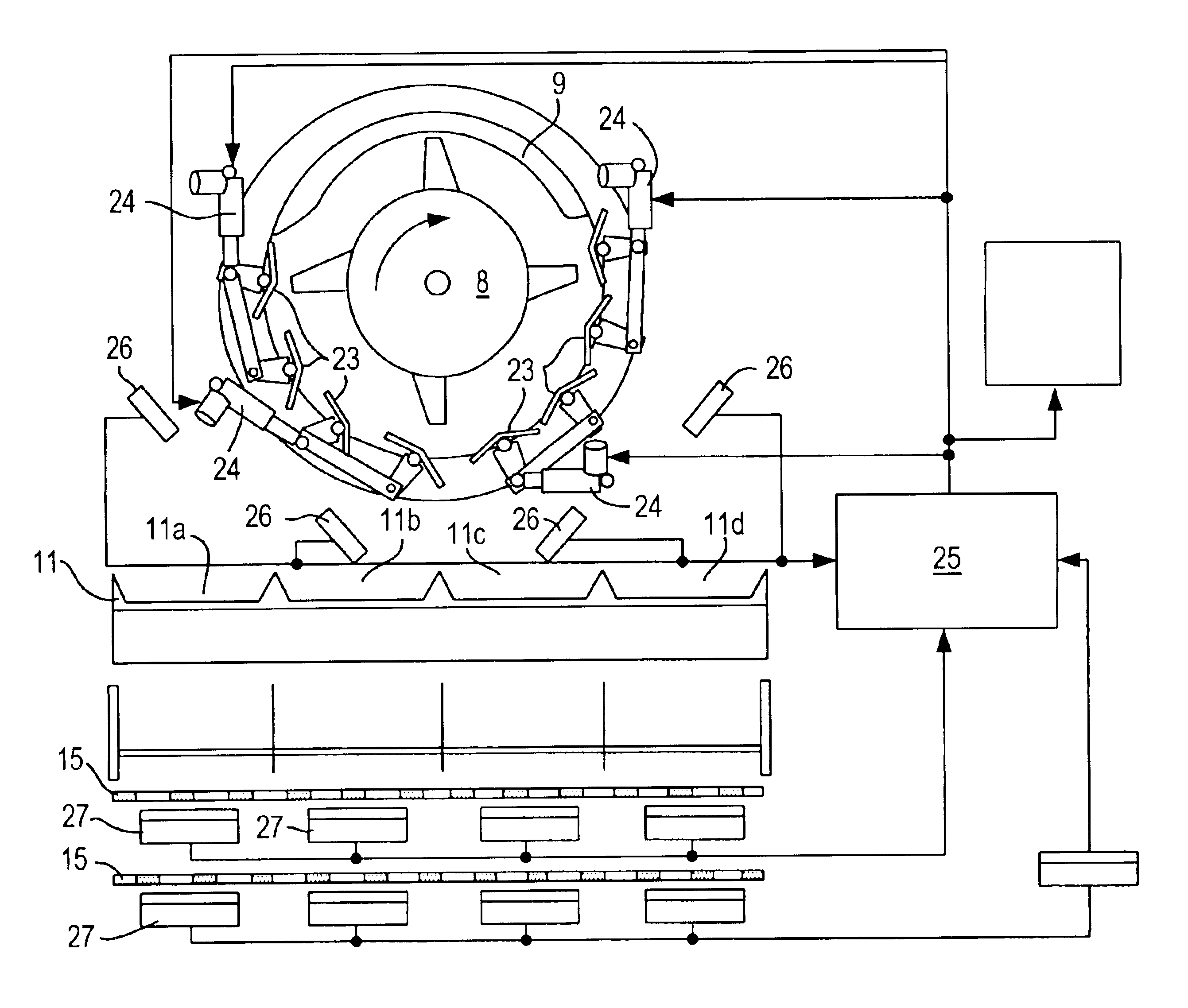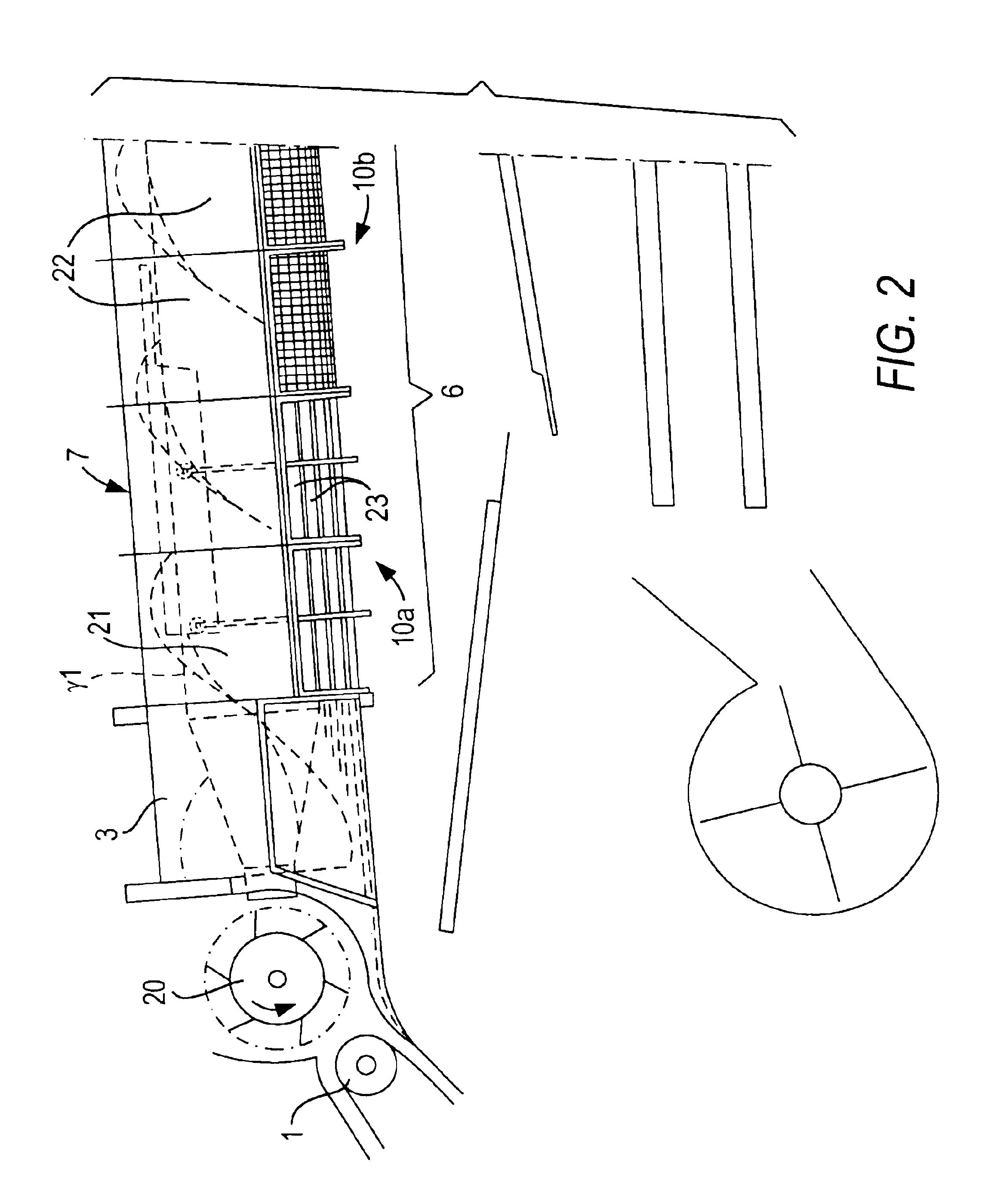Method and device for separating a flow of crops
a technology of separating method and separating device, which is applied in the direction of mowers, threshers, baling, etc., can solve the problems of affecting the further ability to process and the value of the useful material so obtained, affecting the optimal separating result of the actual technology, and reducing the efficiency of the second separating stage based on economic grounds
- Summary
- Abstract
- Description
- Claims
- Application Information
AI Technical Summary
Benefits of technology
Problems solved by technology
Method used
Image
Examples
Embodiment Construction
[0024]FIG. 1 shows a schematic section through the back region of a combine as an example for a separating device of the present invention. With such a combine, a flow of crops to be separated is formed by a mown crop in a flow of crops to be separated, and the goal of the separation is to obtain a useable material flow, which contains the grain in the purest possible form, and a waste material flow of non-grain components. In a front region (not shown) of the combine, the mown crop is removed from a mowing table and supplied from a transporter 1 (shown only in a sectional representation) to a tangentially operating threshing device 2. The threshing device 2 is constructed essentially from a threshing drum 3 with an axis oriented transverse to the driving direction of the combine, which is equipped on its outer mantle with friction elements and is surrounded on a part of its circumference by a threshing cage 4. A part of the grains separated from the stalks in the threshing device 2...
PUM
 Login to View More
Login to View More Abstract
Description
Claims
Application Information
 Login to View More
Login to View More - R&D
- Intellectual Property
- Life Sciences
- Materials
- Tech Scout
- Unparalleled Data Quality
- Higher Quality Content
- 60% Fewer Hallucinations
Browse by: Latest US Patents, China's latest patents, Technical Efficacy Thesaurus, Application Domain, Technology Topic, Popular Technical Reports.
© 2025 PatSnap. All rights reserved.Legal|Privacy policy|Modern Slavery Act Transparency Statement|Sitemap|About US| Contact US: help@patsnap.com



